Harvesting Dandelion Roots with Dr. Nate Petley
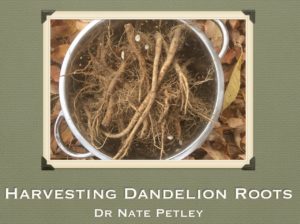
Behold the amazing dandelion! Not only can we eat the nutritious greens in spring, but we can make a delicious root tea come fall. Once the fall frosts start, and about the time I’m digging the last of my potatoes and carrots, I keep on the lookout for dandelions in the garden. I tend to let my dandelions grow throughout the garden and only weed them out if they are interfering with other vegetables and herbs. In this way, I can select new dandelion leaves and they are produced throughout the summer and it ensures sizeable and easily harvested roots in the fall. You could say I do my best weeding long after the growing season.
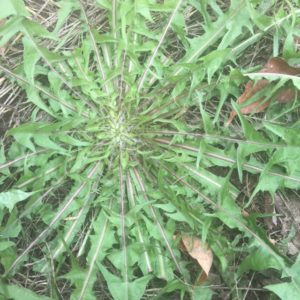
Dandelions are relatively easy to identify, with their toothed leaves in a basal rosette arising from a long taproot. They are a member of the Asteraceae family. The midrib of the leaf and the stem of the flower will produce a milky sap when broken. Despite their widespread distribution, they have naturalized from Europe.
Do not collect or use dandelions that come from fields or yards that have been sprayed with chemicals. If harvesting these for the first time, please find a knowledgeable herbalist or botanist who can correctly identify them (in case you have any questions).
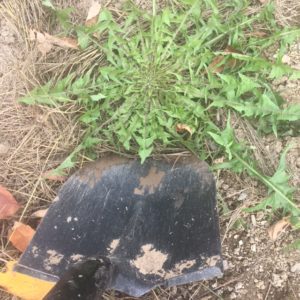
With spade in hand (a trowel works fine too), lift out the long taproots. They pull right out once you loosen the soil. I never worry about over harvesting these from the garden because wherever the root breaks, another plant will grow come spring.
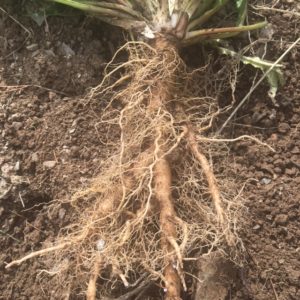
In my central Maine soil, the roots are often contorted and branching – signs of rocks and sticks throughout. I will say that garden grown dandelions are far easier to harvest than their field counterparts. Digging dandelion roots is a back-breaking job but I find an hour of work in the fall completely worth it when I sip on the roasted dandelion root tea while watching the snow fall all winter.
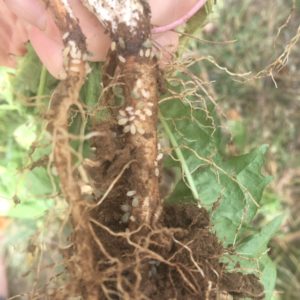
Upon digging, look for insects that may be living on the roots. It is rare to see something eating the dandelion but this year, as if on cue for the camera, I noticed aphids living among the roots of one plant. Simply remove surface insects or discard the entire root if there is considerable damage. Where there is one dandelion, there is often an abundance of them – so I don’t worry about saving every last piece.

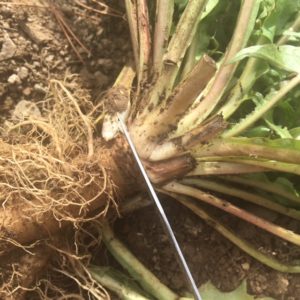
With a sharp knife, remove leaves at the junction where the root begins. For root coffee, it is best not to include any portion of the leaves. However, the leaves here are a fall flush and completely suitable for using as a potherb (sauté or boil). Some only consume the leaves in early spring because they are more tender and less bitter, but once they start producing leaves again after the drying summer, I can find enough young leaves to throw into a salad (yes, they are bitter!) or to cook up.
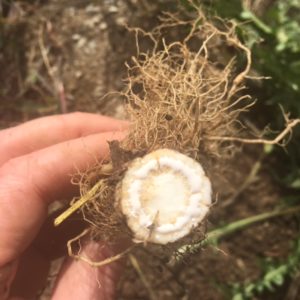
You may see the bitter milky sap seep from the root. If it gets on the skin, it can slightly stain the skin brown. I don’t often distinguish this versus the stains of good garden soil, but either way a good scrub with homemade soap does the trick to clean the hand after harvesting. Folk lore indicates that this latex has been used to help remove warts when applied daily. While I haven’t seen this to be effective in the clinic, I do love to propagate lore about the medicinal use of herbs.
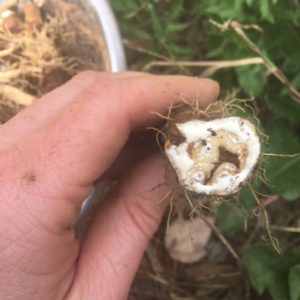
Be on the lookout for root rot or signs of overwintering insects in the larger, fleshy portions of the root. Simply cut out the section or discard the entire root. Older roots are more likely to split and create cavities that fill with soil and it is not uncommon to see earthworms tucked up inside.
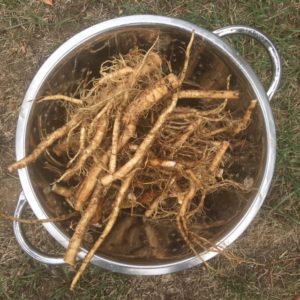
What I’ve learned over the years is that I need to harvest double the amount I think will be enough. It never is. When you get tired of digging or truly think you have enough, sort through the roots to remove leaves, sticks, foreign plant material, rocks, and insects. Shake off as much soil as possible. Wash thoroughly because there will be soil in all the tiny crevices. I do this outdoors. An easy approach is to fill a bucket with water and swish and dunk the roots while inspecting them again. One can never be too careful! I will change the water several times as the soil falls off and muddies the water. Place them in a colander for a final rinse.
At this point, there are many options for using and preserving these roots for winter use. They can be made into dandelion root tea either in this fresh state or dried to use later in the year. They can be made into a tincture. My favorite way to process these roots in the fall is to roast them. The smaller roasted roots make a tasty and bitter pre-dinner digestive stimulant and the larger roots can be ground down with a mortar and pestle to make ‘root coffee’ (this beverage goes by many names). To learn how I make roasted root tea, see Part 2!
Dr. Nate Petley is a naturopathic doctor and clinical herbalist. He lecturers throughout New England sharing his expertise in naturopathic and botanical medicine. Dr. Petley blends the art and science of herbalism in his clinic and classroom, relying on his 20 years of experience studying, wildcrafting, and making herbal medicine.
Dr. Nate Petley | www.drpetley.com | 2016. All rights reserved. All text and photos are the property of Nathaniel Petley, ND.